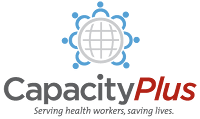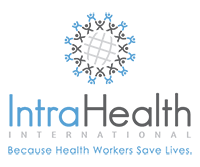Tools & Guides
Advancing Gender Equality in Health Systems
CapacityPlus developed learning tools to address the challenges of gender inequalities and discrimination in the health workforce and health professional education systems and promote gender- transformative principles in advocacy, policy-making, and program implementation. [from resource]
- 849 reads
mHealth Field Guide for Newborn Health
This guide that explains how mHealth serves newborn health through referral and tracking of mothers and infants, decision support for CHWs, CHW supervision, scheduling and tracking postpartum and postnatal visits, and teaching and counseling for mothers and families. Case studies are provided from Afghanistan, India, Malawi and Indonesia. Links to resources for planning, implementation and evaluation are included along with lessons learned across the case studies. [from abstract]
- 535 reads
Creating Technical Assistance Libraries to Capture Tacit Knowledge
In international nongovernmental organizations such as Pathfinder International, staff often lack quick and easy access to the expertise of their colleagues due to demands on time, competing priorities, and lack of systems to capture this knowledge. To address this issue, Pathfinder created a collection of high-quality technical resources that also includes the experiences of technical advisors in using the resources.
- 477 reads
Guide to the Performance Appraisal System in the Civil Service and Local Authorities
The purpose of this guide is to assist the Appraising Officer (Supervisor) and the Appraisee in the effective implementation of the PAS in the Civil Service and Local Authorities. [from introduction]
- 703 reads
Geospatial Analysis in Global Health M&E
Geospatial Analysis in Global Health: A Monitoring and Evaluation Guide for Making Informed Decisions provides monitoring and evaluation (M&E) practitioners an overview of geospatial analysis techniques applicable to their work. This guide shows how geospatial analysis can be used to support public health program decision-making along with routine planning and M&E. [from abstract]
- 597 reads
Designing Participatory Meetings and Brownbags: A TOPS Quick Guide to Linking Development Practitioners
This resource contains ideas on designing meetings and brownbags that are engaging and build inopportunities for participant dialogue. [from resource]
- 411 reads
Guide to Monitoring and Evaluation System Design for Value Chain Projects
The intention of this guide is to give project design teams, project M&E staff and project managers the tools and guidelines they need to effectively plan for and manage highly-effective systems for monitoring and evaluating value chain projects. In doing so, the guide aims to enable CARE to improve the performance of value chain interventions and improve CARE‘s ability to test the Market Engagement Theory of Change.
- 454 reads
Condom Use Toolkit
Male and female condoms are the only contraceptive methods that provide dual protection against both unwanted pregnancy and sexually transmitted infections (STIs) including HIV. Through state-of-the-art scientific evidence, programmatic guidance, and implementation tools, the Condom Use Toolkit assists health policy makers, program managers, service providers, and others in planning, managing, evaluating, and supporting the provision of condoms. Many items in the Condom Use Toolkit can be adapted for use in specific country contexts and unique program circumstances. [from introduction]
- 414 reads
Health Workforce Productivity Analysis and Improvement Toolkit
The Health Workforce Productivity Analysis and Improvement Toolkit describes a step-wise process to measure the productivity of facility-based health workers, understand the underlying causes of productivity problems, and identify potential interventions to address them and improve health service delivery and achieve health goals. This toolkit focuses specifically on the productivity of facility-based health workers and not that of the health system as a whole. [from introduction]
- 832 reads
Scaling Up Health Workforce Education and Training: Guide for Applying the Bottlenecks and Best Buys Approach
Bottlenecks and Best Buys Approach is designed to help educational institutions identify obstacles to increasing the production of competent and qualified graduates that can be overcome through limited yet strategic investments. This guide draws from the project’s experience of adapting and applying the approach in more than 30 nursing, midwifery, medical, health assistant, and community health extension worker schools, both public and privately owned, in seven African countries. [from introduction]
- 664 reads
The mHealth Planning Guide: Key Considerations for Integrating Mobile Technology into Health Programs
The mHealth Planning Guide helps individuals and organizations appropriately plan for mHealth deployments. [from introduction]
- 654 reads
Optimizing Performance and Quality
Optimizing Performance and Quality (OPQ) is a stakeholder-driven, cyclical process for analyzing human and organizational performance and setting up interventions to improve performance and quality or build on strengths and successes. The OPQ process is a seven-stage process to builds capacity within an organization to recognize and address problems or performance gaps on an ongoing basis. [from resource]
- 715 reads
Centre de Documentation Electronique - VIH/sida - Côte d'Ivoire
Le CDE [Centre de Documentation Electronique] se veut un centre de partage et d’échange de connaissances et d’expériences en matière de lutte contre le VIH/sida. Vous trouverez dans cet espace toute information, documents, publications, ainsi que des outils de communication utiles développés par le CCP [ Centre des Programmes de Communication de l’Université de Johns Hopkins] et ses partenaires dans le cadre de la lutte contre le VIH/sida impliquant les jeunes en Côte d’Ivoire. [from introduction]
- 559 reads
Patient Safety Curriculum Guide for Medical Schools
The WHO Patient Safety Curriculum Guide for Medical Schools, published in 2009 aims to encourage and facilitate the teaching of patient safety topics to medical students.
- 2338 reads
Checkpoints for Choice: An Orientation and Resource Package
Checkpoints for Choice: An Orientation and Resource Package offers practical guidance on how to enable stakeholders involved in FP programs to examine issues of full, free, and informed choice and to keep the needs and preferences of clients central to their operations. The package consists of a detailed plan with all support materials for a one-day workshop to enable FP program planners and managers to strengthen the focus of FP programs on clients’ human rights and contraceptive choices in the context of a rights-based program. [from resource]
- 565 reads
Principles for Digital Development
The Greentree Consensus represents a concerted effort by donors to capture the most important lessons learned by the development community in the implementation of information and communications technology for development (ICT4D) projects. [from resource]
- 548 reads
Connecting Health Information Systems for Better Health: Leveraging Interoperability Standards to Link Patient, Provider, Payor, and Policymaker Data
This e-book is a reference guide for countries wanting to link their universal health coverage and eHealth information systems using a standards-based approach. It provides a set of actionable steps and links to resources to develop a national eHealth standards framework. [adapted from resource]
- 524 reads
mHealth Mobile Messaging Toolkit: Considerations When Selecting a Mobile Messaging Platform Vendor
This toolkit provides information about currently available mobile messaging technology solutions, as well as things to consider when selecting a vendor and deploying an mHealth campaign. It was designed for project implementers using mobile messaging campaigns to encourage healthy behaviors in low- and middle-income countries. [adapted from resource]
- 600 reads
Male Circumcision Consortium research briefs
he Male Circumcision Consortium (MCC) conducted research from 2008 to 2013 to inform the scale-up of voluntary medical male circumcision (VMMC) services in Kenya. This series of briefs presents the results of nine studies and their implications for Kenya’s VMMC program. The evidence generated by these studies may also be useful to other countries that are scaling up VMMC services. [adapted from resource]
- 437 reads
United States Government. Global Health Principles Monitoring and Evaluation Resource Guide
This guide provides clear monitoring and evaluation definitions, global indicators, and country-level indicators for a variety of U.S. agencies, to enabled them to collaborate more closely on shared objectives in global health. Interagency teams worked together, with MEASURE/Evaluation, to explore existing monitoring approaches, review the evidence, and develop meaningful and specific indicators. [from resource]
- 413 reads
Health Workforce Productivity: An Approach for Measurement, Analysis, and Improvement
Given the global health worker crisis, now more than ever there is a critical need to improve the productivity of the existing health workforce and maximize service delivery efficiencies to ensure quality family planning/reproductive health (FP/RH), HIV and AIDS, maternal and child health, and other health services as well as further progress towards universal health coverage. This course explores some basic concepts of health workforce productivity. [from resource]
- 667 reads
Family Planning Logistics Toolkit
n family planning programs, logistics refers to the selection, financing, delivery, and distribution of contraceptives and related supplies. Successful logistics management means delivering the right product, in the right quantity, in the right condition, to the right place, at the right time, for the right cost.
- 570 reads
Straight to the Point: Assessing Partner Capacity Building Needs
This tool helps users conduct a concise assessment of a partner organization’s (or potential partner’s) strengths and weaknesses, helping to identify areas where technical assistance will be needed to successfully implement a project. The tool addresses key capacity areas including: human capacity, basic management capacity, M&E capacity, absorptive capacity, and community connectedness. The tool is meant to serve as a guide for interviewing multiple stakeholders at a partner or subgrantee organization. [from introduction]
- 406 reads
Rural Health Worker Retention Tools
Many countries struggle to attract and retain sufficient numbers and types of health workers to provide quality services in rural and remote areas. To encourage country ownership and advocate for use of data for policy-making, the USAID-funded CapacityPlus project developed several tools, including the Rapid Retention Survey Toolkit; a companion software product, iHRIS Retain, developed in collaboration with the World Health Organization (WHO); and a discrete choice experiment user guide, developed in collaboration with the World Bank and the WHO. [from introduction]
- 612 reads
In-Service Training Improvement Framework Launched at the Third Global Forum on Human Resources for Health
Training is clearly an important contribution towards the development and maintenance of health worker competencies for delivering quality services – but how can we make training more effective, efficient and sustainable? We gathered participants from around the world at a side session to harvest and share experiences, strategies and lessons learnt.
So what did we learn? We’ve conveniently packaged together the questions we discussed along with some of the main lessons learnt here. [adapted from authors]
- 859 reads
Developing and Strengthening Community Health Worker Programs at Scale: A Reference Guide and Case Studies for Program Managers and Policy Makers
The Reference Guide has many practical examples from CHW programs around the world. The contents are in four sections and contain a total of 16 chapters covering such topics as a history of CHW programs, planning, governance and financing, national coordination and partnerships, roles and tasks, recruitment, training, supervision, motivation and incentives, relations with the community and health systems, scaling up, and measurement and data use. [from introduction]
See resource on Recruitment of Community Health Workers
- 584 reads
A Forecasting Guide for New and Underused Methods of Family Planning
This guide provides direction to programs that want to forecast for new and underused methods (NUMs) of family planning. It supports program managers and others involved in forecasting as they plan to (1) introduce a contraceptive technology for the first time in a country, and/or (2) position an underused method for scale up. [from introduction]
- 502 reads
Task Shifting to Improve Access to Contraceptive Methods
This document summarizes the WHO recommendations on the cadres ranging from lay health workers to mid-level providers that may be trained and supported to provide the following contraceptive methods safely: tubal ligation, vasectomy, intrauterine device (IUD), implants, injectables, as well as promotional activities. The process of enabling additional cadres to provide a specific health intervention is referred to here as ‘task shifting’ but is also widely known as ‘task sharing’. [from introduction]
- 666 reads
Health in the Post-2015 Development Framework
In order to ensure continued strong political and financial support for the global AIDS response in the post-2015 era, it is crucial to advocate for the inclusion of strong targets and indicators related to AIDS, sexual and reproductive health and rights and human rights under the new post-2015 health goal and other relevant goals. This paper is a helpful tool to influence your governments as they start developing their positions on the new post-2015 Framework. [from introduction]
- 522 reads
Advocacy Toolkit for Key Populations: The EMPAD Policy Framework for National Advocacy by and with Key Populations
This tool is intended to support national-level advocacy as an element of HIV programmes designed with and for key populations. It highlights how to design new advocacy and campaign programmes, creating advocacy-related funding proposals and communicating with key populations. [adapted from introduction]
- 641 reads




